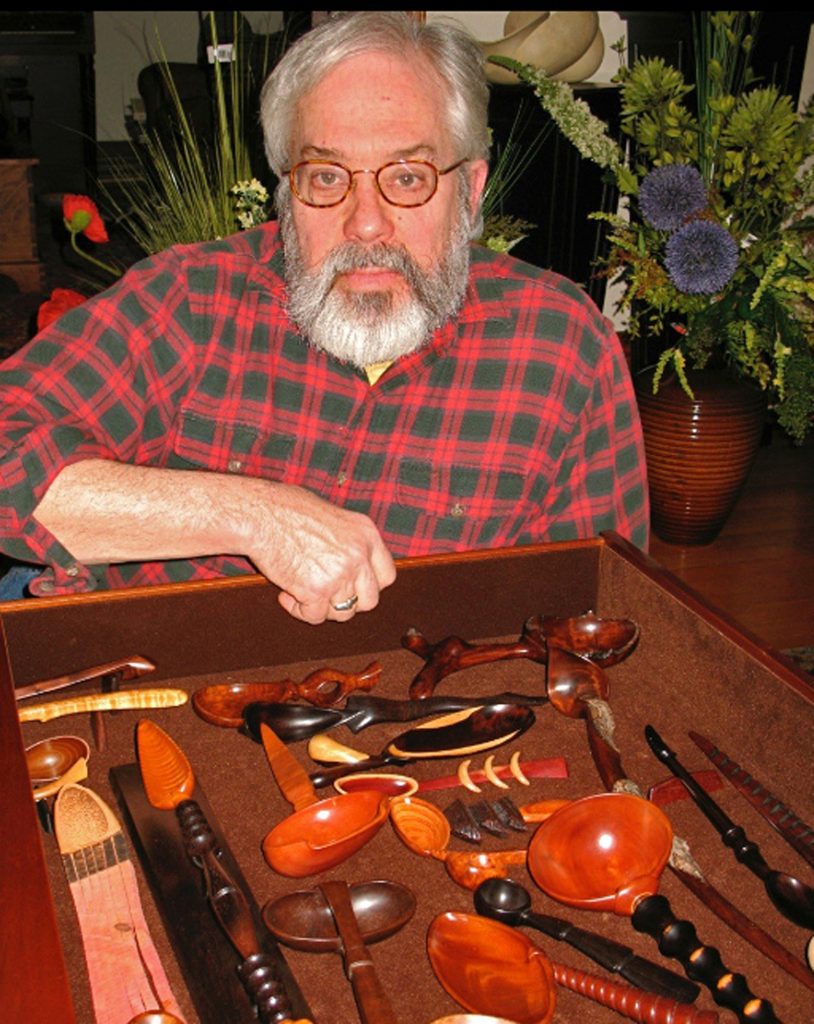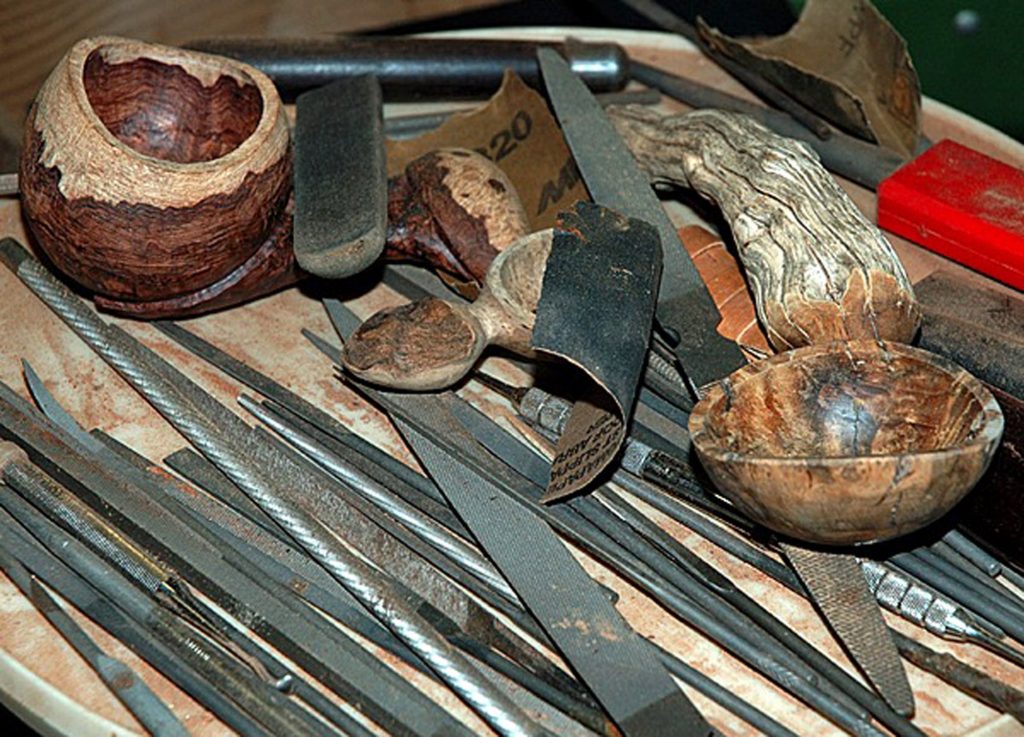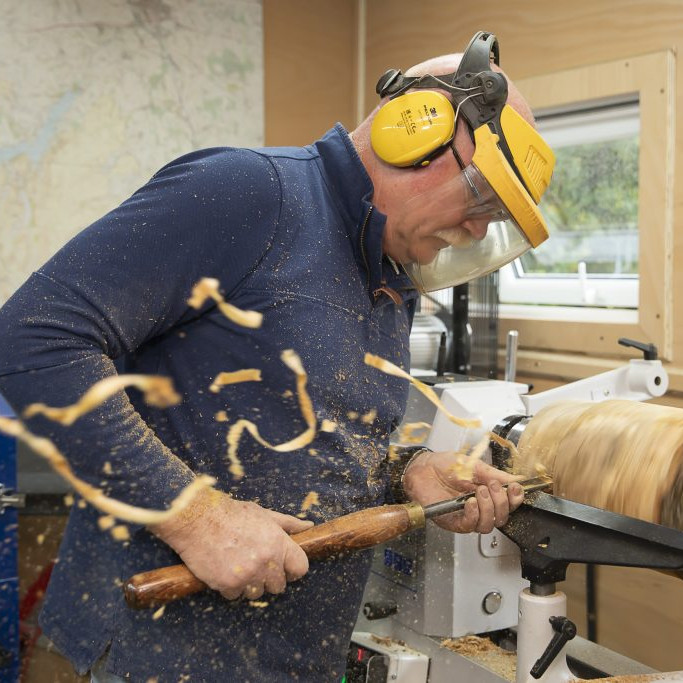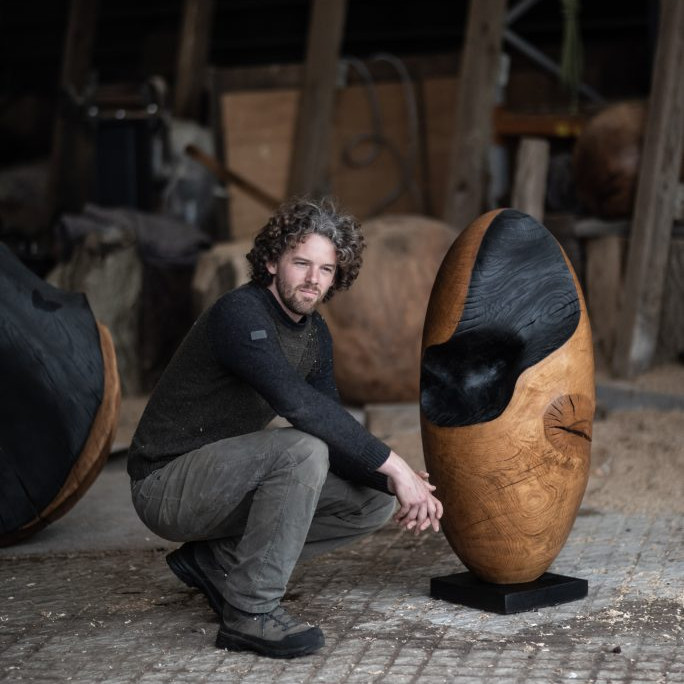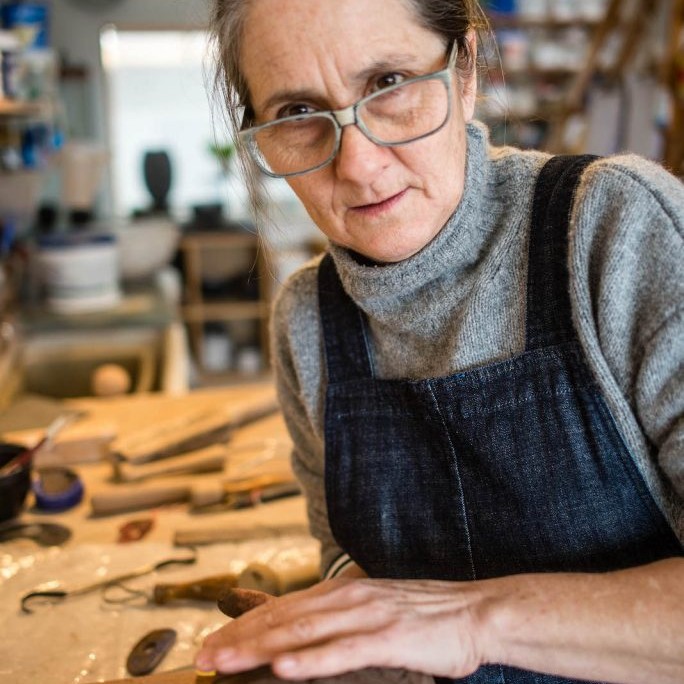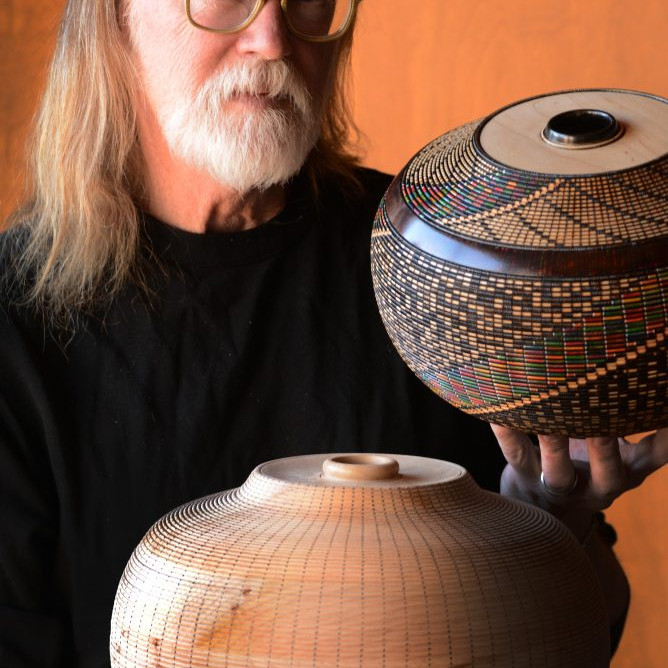Norm Sartorius Wood Artist
You comment, “It’s (a spoon) an instrument, a tool of nurturing that is universal, or very close to universal, in the human experience.” Discuss.
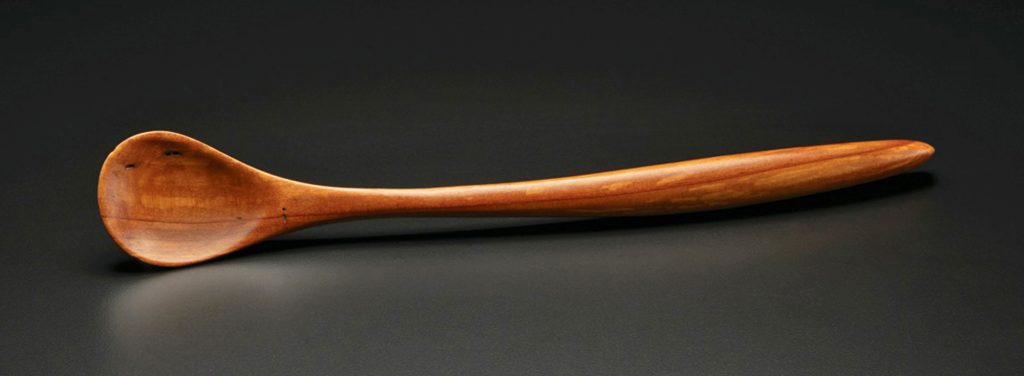
Functional Apple wood spoon, mid 1970’s
The core reason humans have a connection with spoons is that we are born with one on the end of each arm. Cup your fingers and you have a spoon. No one knows when early humans first made a separate utensil from wood, leaves, shells, coconut shell, or some other natural spoon form but it may have followed the advent of cooking. Not wanting to burn themselves they needed something to transfer hot food to the mouth. Nurturing others and ourselves is the mission of spoons.
Expand on the fact that each spoon you make is individual.
I did not want to manufacture a line of spoons. I wanted each spoon to be a response to the creative offering of the wood put together with my state of mind at that moment, that day.
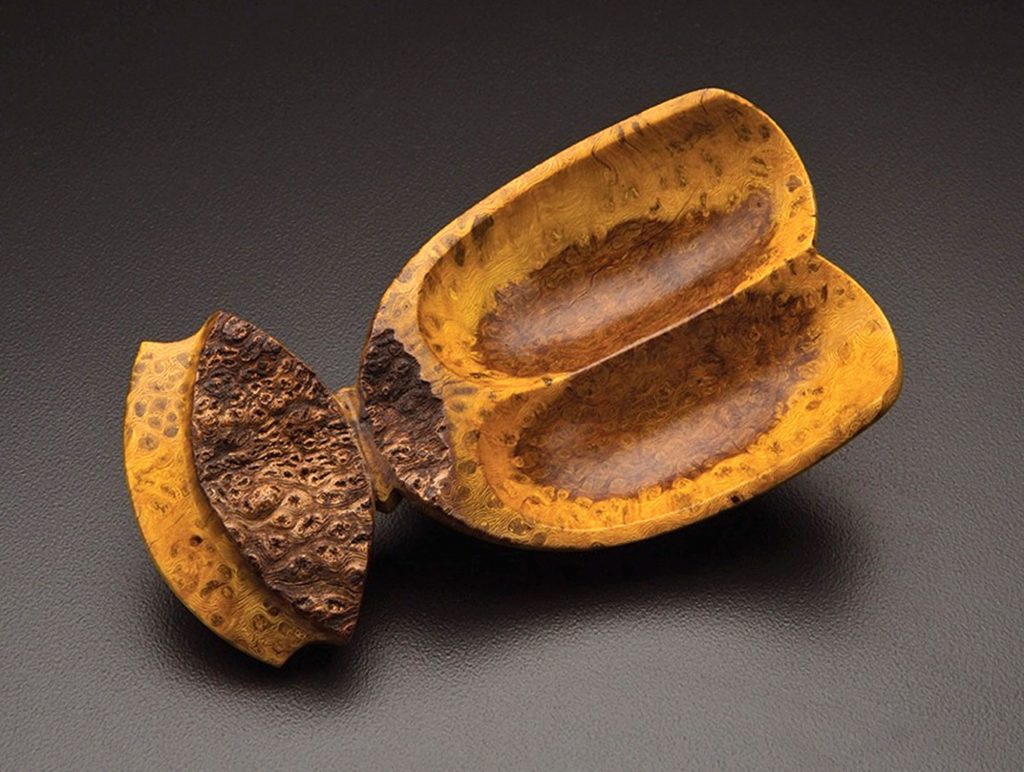
Algerota Burl Scoop
Starting point:
In my shop I am surrounded by many small pieces of rare and interesting woods. They may be special for their colour, grain, and figure or it may come from the history of the wood. Where did the tree grow? What culture usually used the wood?
Wood often comes with a story and sharing that story is part of my goal.
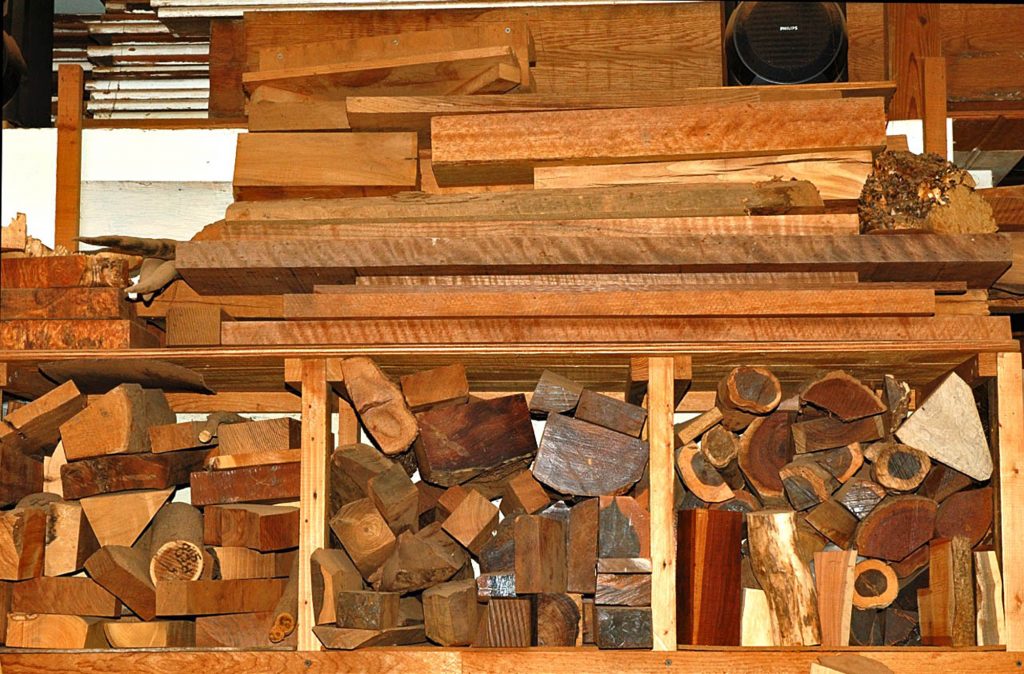
Use:
I made functional spoons from the mid 1970s until the late 1980s. My customers would sometimes say my work was too nice to use which presented a dreadful problem. Should I make more typical, familiar spoons out of plain woods so that people would not be afraid to put it in their spaghetti sauce or should I make what most excited me even if that disregarded function? I chose the latter and have never regretted it.
Woods you use:
I have over 100 different woods in my shop. New woods often bring new ideas. For years I was a member of the International Wood Collectors Society. After appearing at retails shows for over 40 years other makers have learned my interest and some bring wood gifts to shows or ship some of their choice waste when they get home. After storms people call asking if I want the limb that fell from Uncle Henry’s cherry tree. I’ve foraged in the dumpster at Martin Guitar. I often work from other maker’s scrap and, of course, I purchase some wood when I can’t resist the beauty and character that I see online from trusted suppliers.
Apart from spoons, you have made a commemorative piece, ‘Ditch Digger’. Tell us about this piece.
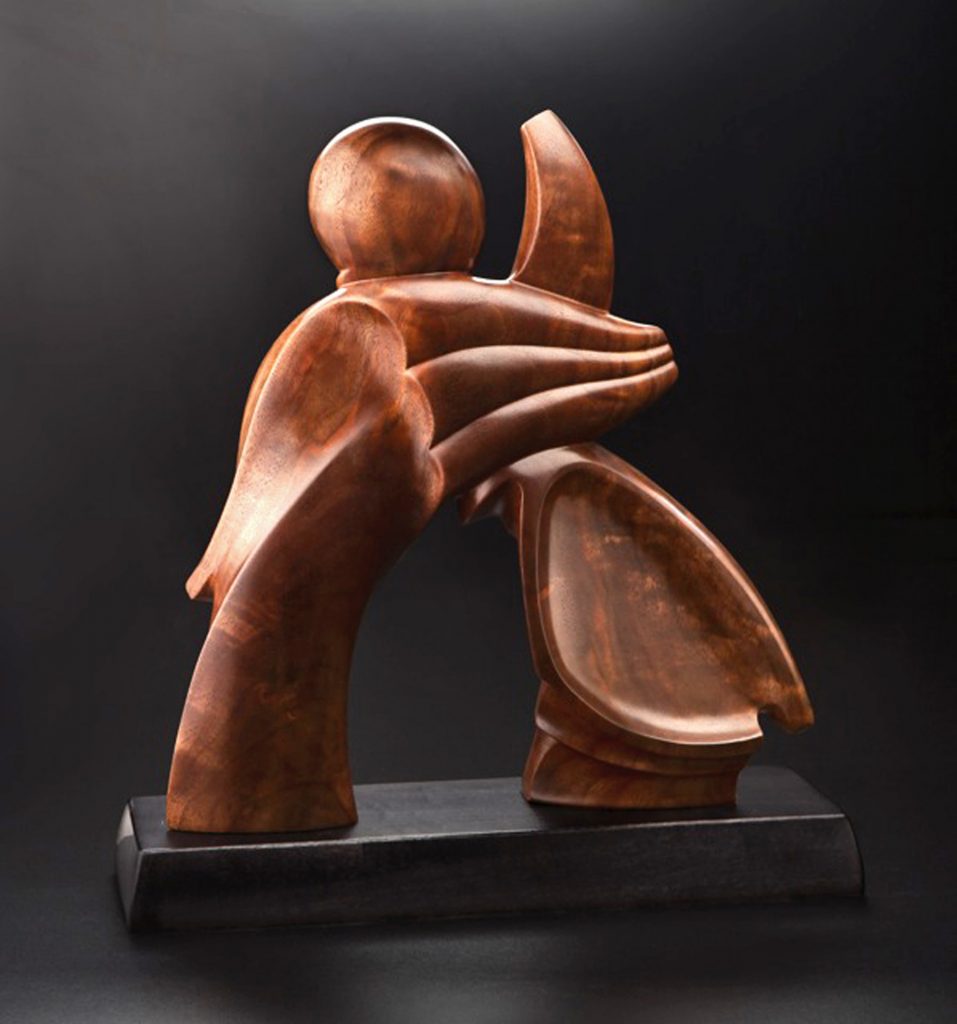
Ditch Digger
“Ditch Digger” was carved from the stump wood of my grandfather’s black walnut tree and it’s my response to advice my father gave when I was a boy. He said what I did in life didn’t matter to him as much as how I did it, adding that even if I became a ditchdigger, if I was a very good ditchdigger, I would have a fine life. My father was a country doctor and he was very sceptical when I started my career in woodcarving. He passed away in 1983 well before I had any success. The sculpture shows a human figure holding a spoon larger than a shovel. This is my tribute to my dad and my thanks for his wise guidance.
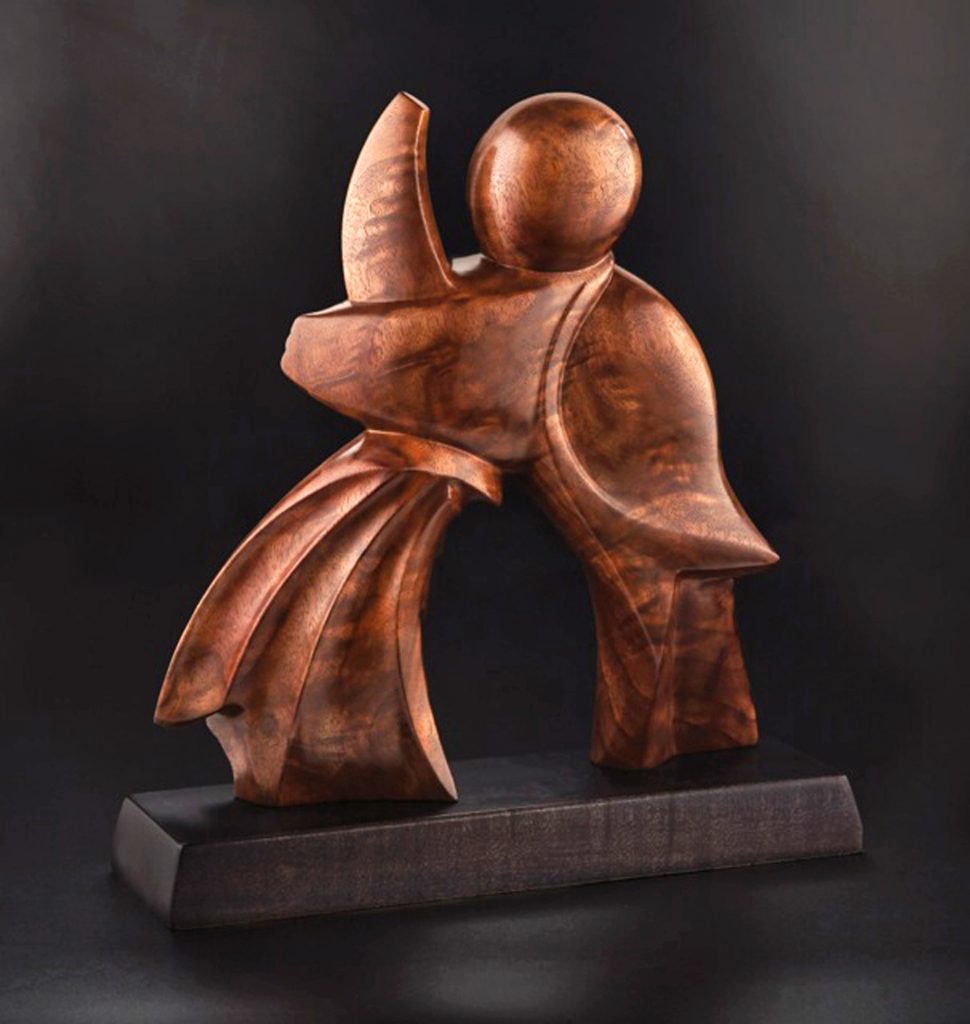
Ditch Digger, rear view
Comment on the fact that you have spoons in so many museums.
Discuss the importance of craft being in these collections.
In the early 1990s, I began to exhibit at the leading craft exhibitions in the US. Museum curators would attend these events to keep abreast of new work in decorative art. When I met curators I would always ask, “Do you have any wooden spoons in your collection”? I learned what had already been collected and how new selections were typically made. At the 1995 Smithsonian Craft Show I asked Michael Monroe, then Curator in Charge of the Renwick Gallery of the Smithsonian’s American Art Museum, that question and he said there were no wooden spoons in the Renwick’s collection. Much to my surprise he then said if I could find someone who would purchase and donate a specific spoon that he liked he would accept it into the museum’s permanent collection.
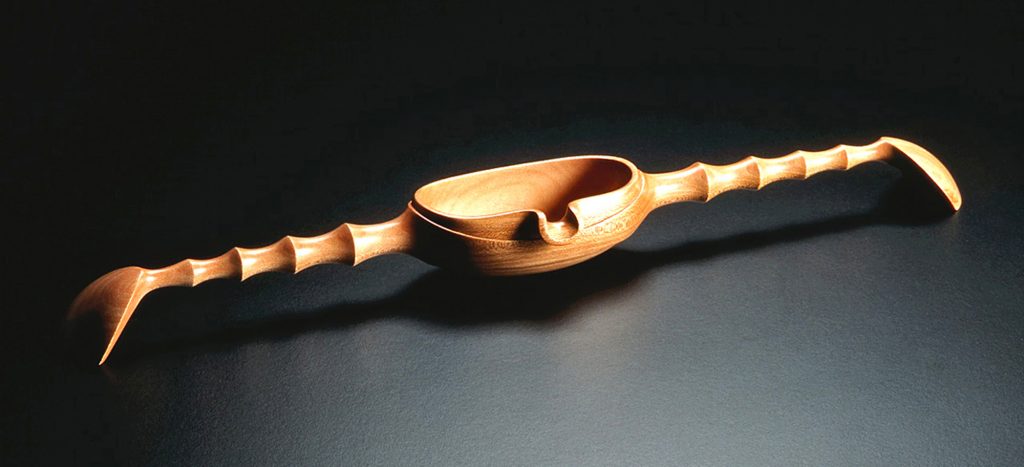
Spoon From a Forgotten Ceremony in the Renwick Gallery
Collectors Robyn and John Horn already had several of my spoons and agreed to placement of Spoon From a Forgotten Ceremony in the Renwick. I learned two things with this transaction. First, that one cannot donate one’s own work to a museum and second, that part of the reason is that the artist must be paid for their work.
I now have work in 20 museum collections. In some, cases I played no role beyond making the work and in other circumstances the museum bought directly from me. Without the support and cooperation of collectors it would be much more difficult for museums to add to their collections.
Another lesson was that the curator makes the choice not the artist or the collector. The work must answer a need in the museum’s collection from the curator’s point of view. Museums commit to caring for objects for many generations. They are the cultural memories of our world. Art historians evaluate museum collections and their accumulated documentation and place that work in the perspective of time, trends, and movements. I have greatly enjoyed working with several museums and have appreciation and respect for their mission as guardians of culture in our society.
Art and Craft are often passed down one generation within families but seldom two. The contact with the artist and the reason for the purchase is forgotten. Museums bridge time and provide a window into past cultures for hundreds of years.
Are any of your spoons in Galleries outside the USA?
Not that I’m aware of.
Your studio is a part of you, discuss.
My shop is cozy. It’s more than a studio; it’s a refuge where I’m protected from the rest of the world.
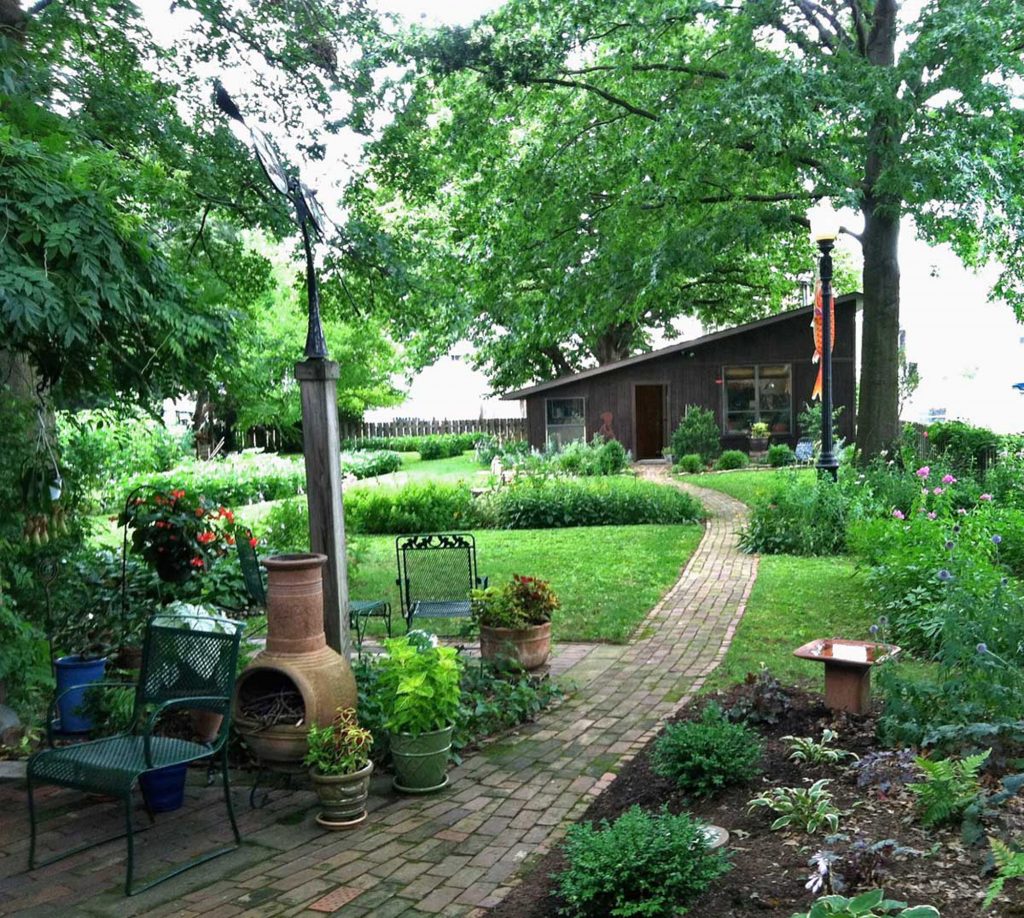
There are windows that look out to my yard and garden. Large oak trees and flowers bracket a brick sidewalk. Inside, wood and tools, and usually my favourite music surround me. It’s a bit messy and cluttered with wood, wood, wood! In the centre of my studio is a simple wood stove. Every winter, feeding the fire is as routine as my interaction with wood, tools, and ideas.
You work alone – discuss your comment “Blank time is significant to my creativity.”
I have a recliner in my shop. I consider it a tool. I’m old enough now that people will sympathize with the notion of napping but I’ve done it my entire career. Taking a break is like clicking the refresh symbol on my computer. I return to work with a clear mind and focus is easier. A short walk, visiting the garden to pull a few weeds, getting a phone call from our son, even doing dishes or cooking serves the same purpose.
If I’m at a critical stage carving a spoon and am having trouble making a decision some blank time often reveals the best path.
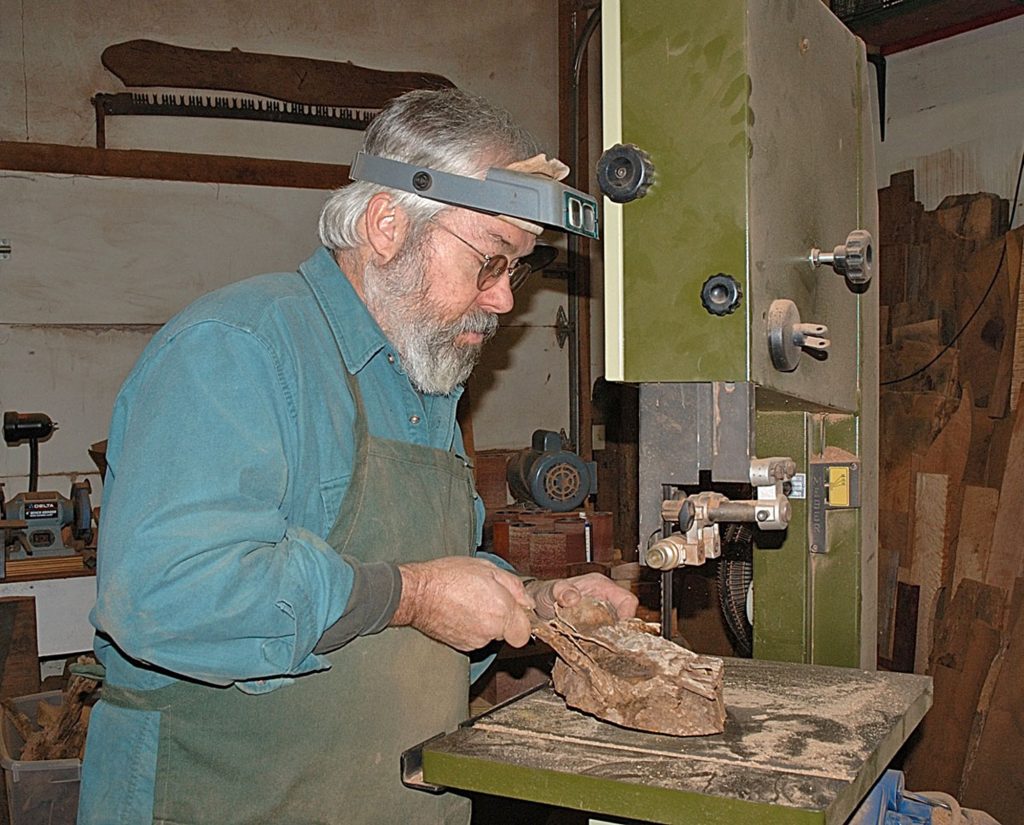
What is one of your favourite woods to use and why?
A long time favourite is Algerita and Algerita burl. This is a common bush in the Sonoran Desert of the American Southwest. When these bushes grow close to a water source they become a small tree. The wood is yellow/green with beautiful grain. Where the trunk meets the dirt there often are small burls. This tree grows in hot and dry environments with rocks and sand. Few pieces are perfect and all but a few are very small. It is not harvested for commercial use. At shows I met a woodworker who lived where this tree is common. He was able to send me what he had salvaged from construction sites. It is a good example of a wood that can be used for small work but is unavailable to the normal timber market.
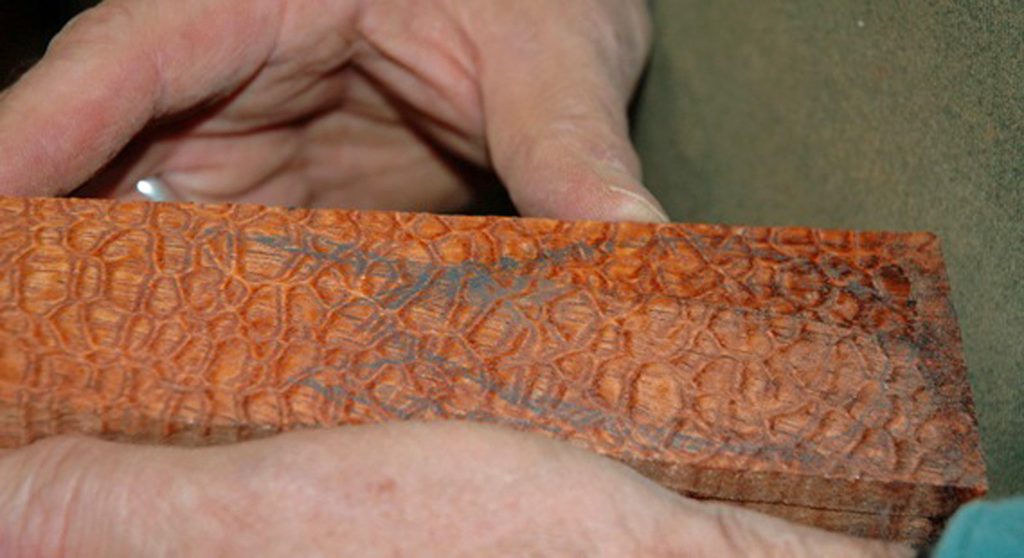
I also enjoy expanding the exposure to wood for my customers and the public at shows. It’s wonderful to have wood in my display they have never seen. In the Eastern US everyone is familiar with Dogwood, a small decorative tree found in the landscaping of many homes but few have seen the wood. Dogwood is another beautiful wood large enough for my work but too small for any commercial timber use.
Please discuss two spoons that show a fun or cheeky aspect of your work.
Spoon with Three Piercings – Pear Wood – 9.5 x 3.5 x 2 – 2004 – Years ago there was a large pear tree overhanging my backyard but rooted in a neighbour’s yard. When my neighbour removed the tree after some storm damage I asked for some of the wood. Included was a section where the yearly movement of sap had carried iron stain above and below three nails buried in the tree. I had seen this before in wood but had never tried to retain the nails in my work. In 2004 tattoos and piercings were becoming increasingly popular so I wanted to reflect that in the title.
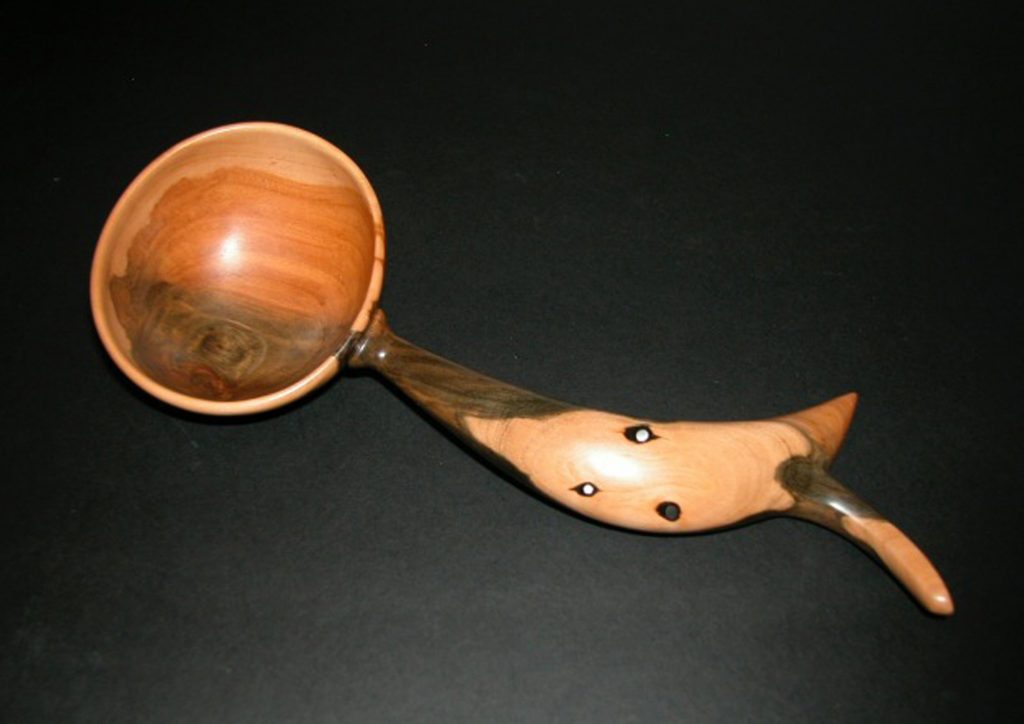
Three Piercings – Pear Wood
Airhead – Australian Snakewood – 6 x 3 x 1.5 – 2012 – I had a momentary lapse of attention when I was almost finished hollowing the bowl of this spoon. In that moment I punctured the bottom. For an hour I was annoyed with myself and thought the piece was ruined but gradually a different idea emerged. This figural spoon seems to be taking a walk with blond hair flowing. Only skeleton evidence of the bowl form remains suggesting the absence of mind. It could be taken as good or bad. A Zen state or a vacuous one, which is it? I thought Airhead was the name I deserved for going through the bottom but it was also the best name for resulting rescued spoon.
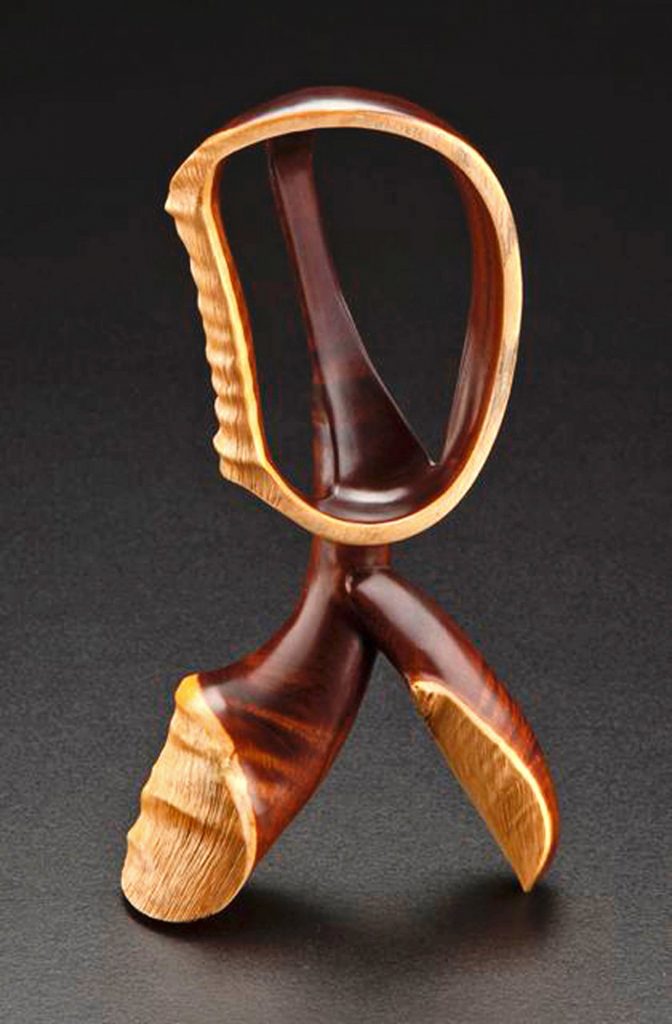
Airhead – Australian Snakewood
Comment on one tool that you love to use and why?
Once I’m finished roughing out a piece on the bandsaw I move to my pneumatic sanding drum. It’s a 3 inch diameter x 6 inch wide inflatable drum mounted directly on a 1 HP 3450 rpm motor. I start with a 24 grit belt. This is my primary sculpting tool for roughing out and refining all but concave forms. It is very aggressive even with the most gnarly burl or super dense wood. I am not sanding so much as shaping. I work on the quarter of the spinning belt that is immediately in front of me. From 3 o’clock to 6 o’clock if the circumference were divided like a clock. I rarely work on top of the belt because my hands and the work itself obscure what is happening. I use a very bright overhead light. Carving with abrasives allows use of any wood regardless how dense or wildly figured it is. I love the huge variety of woods in the world and want to try any wood that appeals to me. A 24 grit belt doesn’t care that the wood dulls edge tools or that it has rowed grain. The use of an abrasive wheel in shaping small wooden art objects was highly developed by mid-century American carver Emil Milan (1922 – 1985). My first teacher, Phil Jurus, was a student of Milan’s. My first pneumatic drum had been one of Milan’s drums. While I never met him, his approach to woodworking greatly influenced mine. I worked as part of a four man team to research Milan’s life. Our book, Emil Milan: Midcentury Master, published by the Center for Art in Wood in May 2018 and was the result of this extensive research.
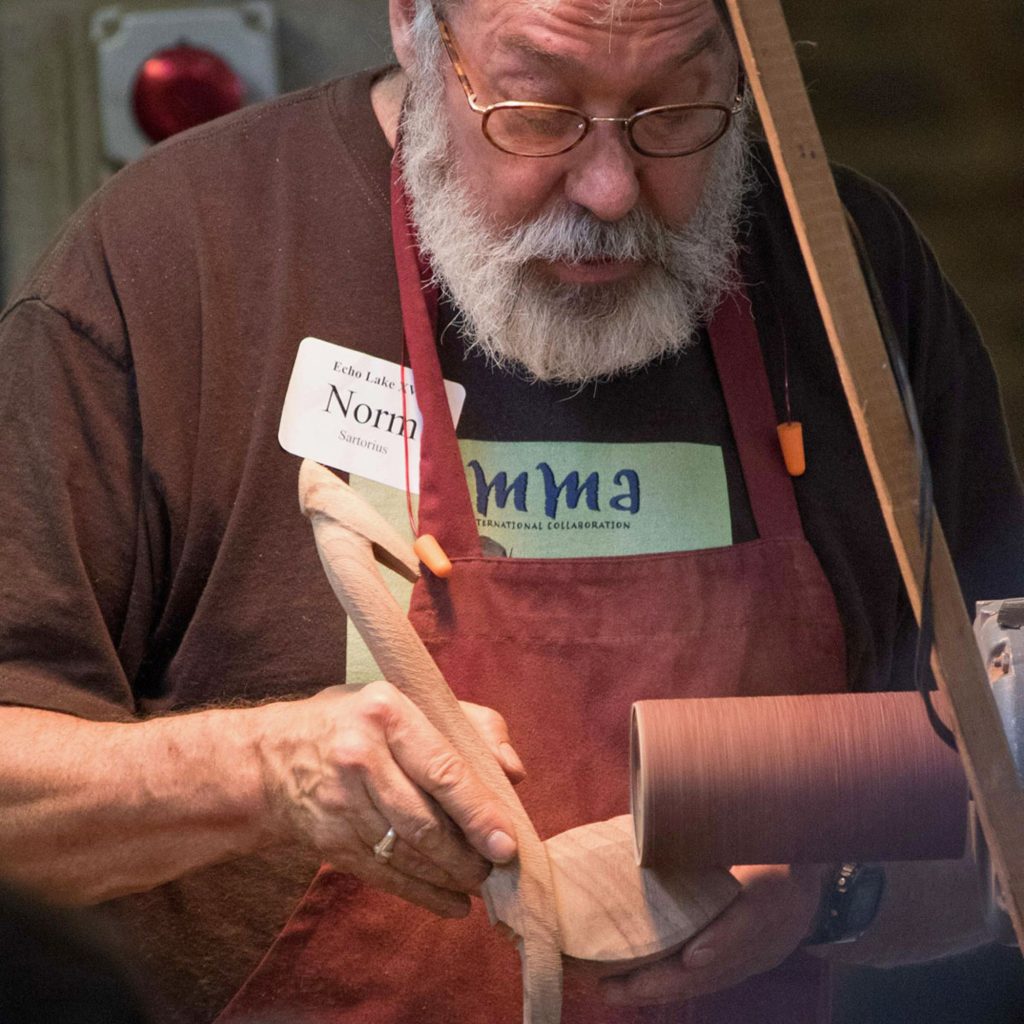
Do you record the wood used on each spoon?
Since 1997 I have kept records for each year’s spoons. Information recorded includes title, wood used, dimensions, price, customer, and where it was sold. There’s space as well for a comment or few word story, if I want to remember a specific detail. This documentation has been very useful when asked to provide images for publication, museum records, and collector appraisals.
Have you found that certain woods are becoming rare or no longer available?
Most woods are still available for the small work that I do. While there’s never been more pressure than there is now on the rare and beautiful woods of the world, these same woods have been sold for centuries and pieces of these woods are in the shops of old makers and dealers all over the world. If you need 100 board feet of perfect Brazilian Rosewood you will have trouble finding it but if you can use an irregular shaped scrap that is in the short rack of an old guitar business you may be able to get just what you need. My wood collection has taken 40 years to accumulate; a chunk, a small piece or two at a time. There are thousands of types of wood I have never seen. A few of them are surely fantastic.
You also make other wooden objects – letter openers, bracelets and sculptures.
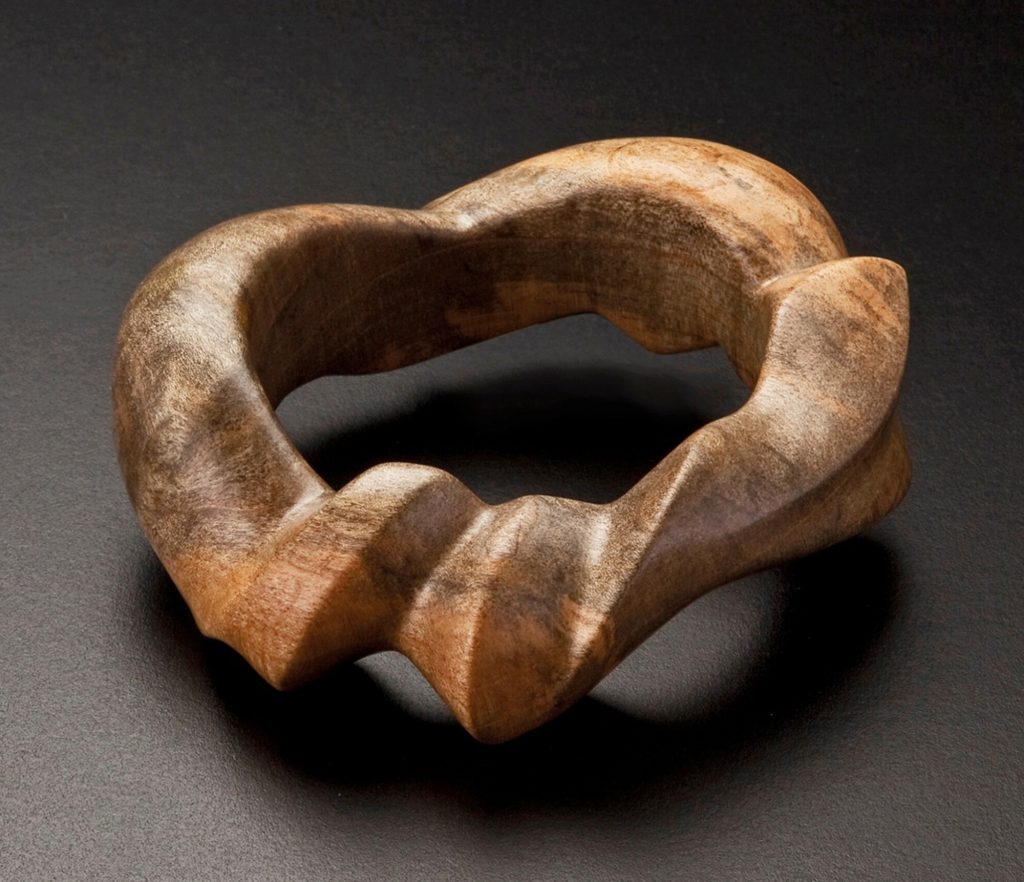
Bracelet, Monticello Poplar
I have made sculptural bracelets and letter openers throughout my career. I always have a few at each show. My spoons are expensive so when someone new visits my booth the more modestly priced bracelets and letter openers give them an entry to my work. I have customers who collect letter openers with one long time customer having over 70. A few letter openers are in museum collections. The same attention to rare and beautiful woods and unique forms that I insist on with my spoons is also shown in these items.
The sculptures are another matter entirely. They are more ambitious than most spoons and much larger in scale. Most have referenced spoons but in a more abstract way. The “Spoon Dreams” series explores creativity as it relates to wooden spoons suggesting a dream where all bowls, all handles, all woods, all shapes, all connections are available. I make sculptures at the rate of a couple a year as opposed to spoons where I aimed for at least 50 per year most of my career.
Discuss ‘Monticello’
“Monticello” – Monticello Letter Opener – Tulip Poplar – 10.5 x 1.75 x .75 inches. Thomas Jefferson, the author of the Declaration of Independence and the third President of the United State may well have planted the tree from which I carved this letter opener. In his Weather Memorandum Book on April 16, 1807, Jefferson noted planting very close to his home, Monticello: “1. Laurodendron in margin of SW [shrub circle] from the nursery.” This tree grew to be enormous and unfortunately hollow. 84” in diameter at it’s base this was described as one of ‘Mr. Jefferson’s pet trees”. It was designated both one of Virginia’s Remarkable Trees and a Millennium Landmark Tree”. Eventually this magnificent tree was removed for safety concerns and I was offered some of the wood for carving.
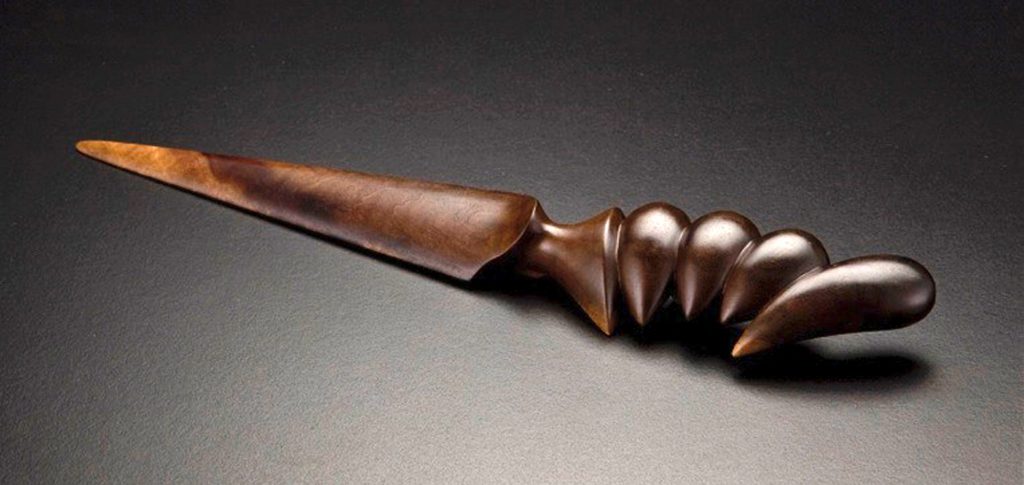
“Monticello” – Monticello Letter Opener – Tulip Poplar – 10.5 x 1.75 x .75 inches.
The huge hollow tree held water and over the years this water stained the wood very dark nearest the soaked interior surface. It was from this unusually dark wood that I carved this letter opener. Letters were the internet of the day for our founding fathers and crafting letters was an art form. This contemporary letter opener honours those bygone days and pays respect to Thomas Jefferson, who loved science, nature, letters, and trees.
In July 2019 you have three spoons spanning 12 years in the exhibition curated by Helen Harrison why these 3 spoons?
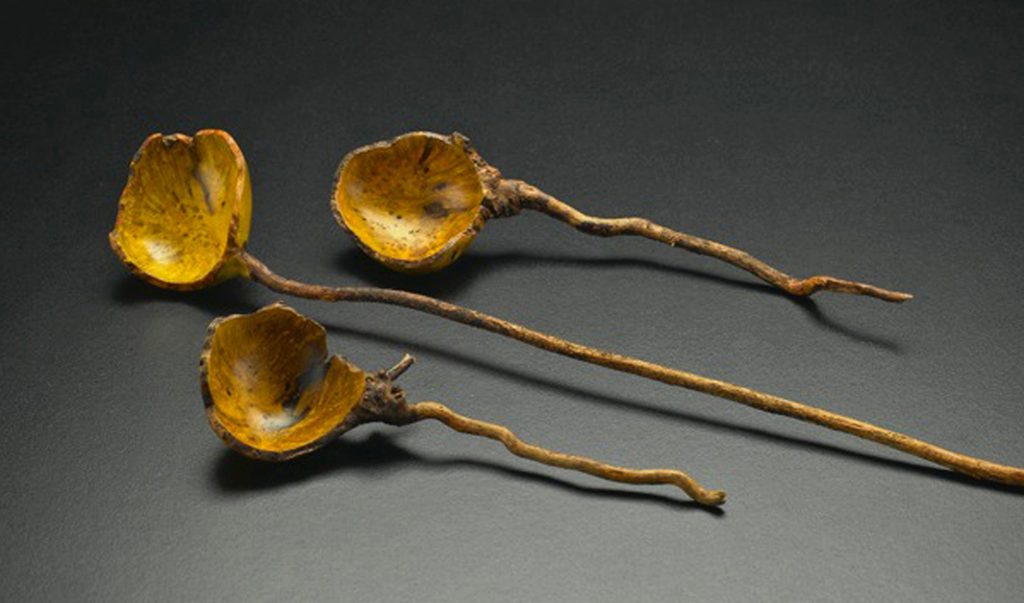
Sperm Spoons, Algerita Burl
Helen chose these spoons from the ‘Avaliable Work’ section of my website. I could have declined but agreed she had made good choices; an excellent recent major piece, a modest spoon a few years old, and the oldest work available at the site.
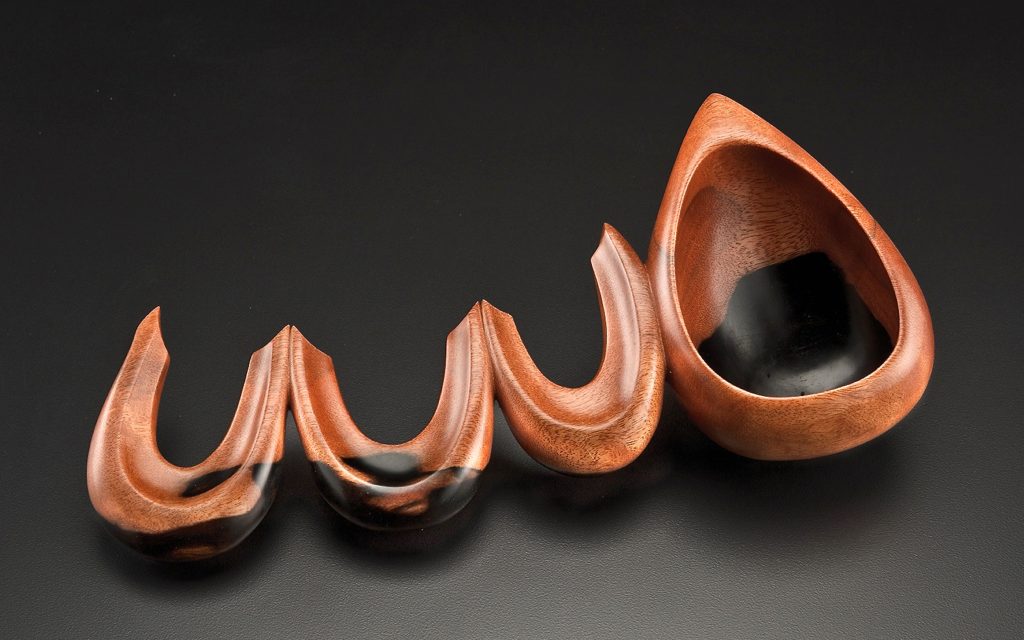
Arches, Macassar Ebony
She covered a broad price range and style of spoon in her selections. These spoons were part of a recent show in Key West, FL called With the Grain: Contemporary Approaches to Wood Art.
Discuss, “Traces” – African Blackwood Burl Spoon.
Tell us about POP, Professional Outreach Program and your involvement.
The American Association of Woodturners (AAW) fosters and promotes high standards of professionalism in the field of woodturning through a range of initiatives.
At every year’s AAW Symposium there is a POP themed exhibition and auction to raise money for the organization’s projects. This year a few non-turners were invited to contribute, I was fortunate to be included.
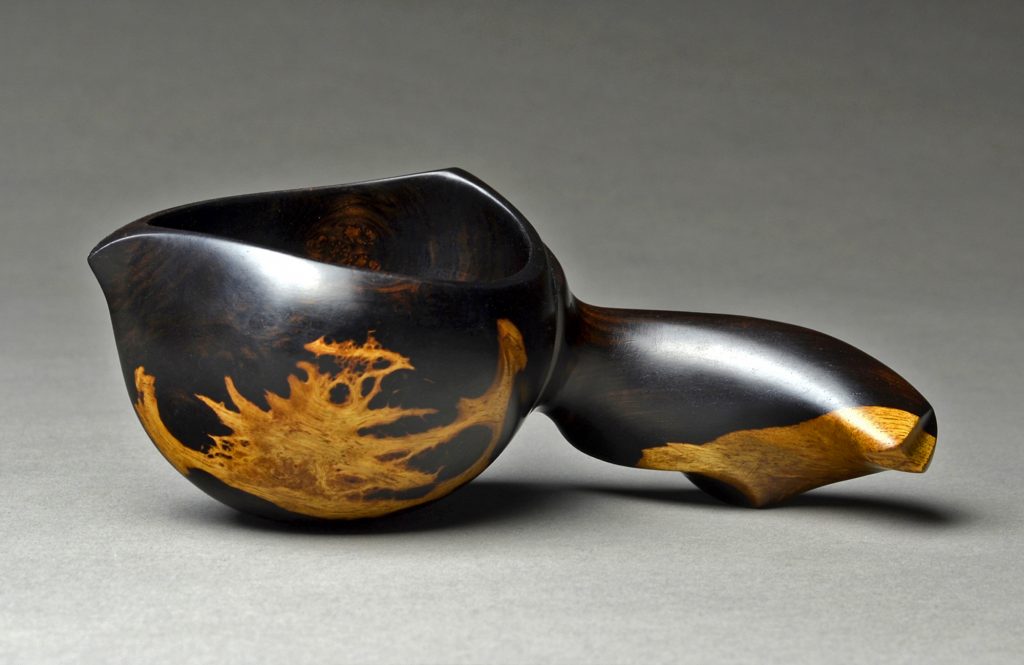
Better than None – African Blackwood Burl Spoon – 6” x 2.5 x 2
This is the second completely new spoon I’ve made since health issues sidetracked me in the summer of 2017, so this represents a trace of my previous career. I also greatly enjoy the traces of sapwood visible on the outside of the spoon bowl. Patterns of this sort only occur when the miniature mountain ranges of eye burls interface between heart and sapwood. These traces are worth seeking and worth revealing as, I hope, was the personal reveal that I can still make a spoon after a significant layover.
How has your work developed from 2004 till 2019?
Since 2004 the changes have reflected aging and my desire to use the very best materials in my wood collection. If the piece fails to excite me, I may let it go. As technology has largely replaced letters with emails the use of letter openers has dropped so I make fewer each year. As time passes, I find I am free to be experimental and to step even farther from the functional reference of the spoon form.
What are one or two important things you have learned?
I believe that the artist/collector relationship is even more critical in the future than it’s been all along. Most of us need to sell our work in order to continue making. I’m especially grateful to collectors not only for supporting me but also for their advocacy for the field. Organizations like the Collectors of Wood Art, The American Association of Woodturners, the Center for Art in Wood and the leading craft schools such as Arrowmont, Penland, Haystack, Anderson Ranch, etc all count on the sustained support of collectors The documentation of our field in craft publications and periodicals is also critical and funding organizations such as the Center for Craft, Creativity, and Design help document our field.
I’ve also learned that people appreciate a story that helps make a connection between them, the artist, and the object. Part of why they visit my booth is to see the work but often they want to talk about their lives, their families, their experiences. They want to share what’s on their mind with a friendly person. Sometimes we connect over a related interest such as a book or museum show we’ve each seen. Many retired people who have woodworking as a hobby want to ask questions about woods, tools, finishes. In most cases I see this as fostering the good will that exists among woodworkers. You never know where it will lead and sales are certainly not the only reward of this work.
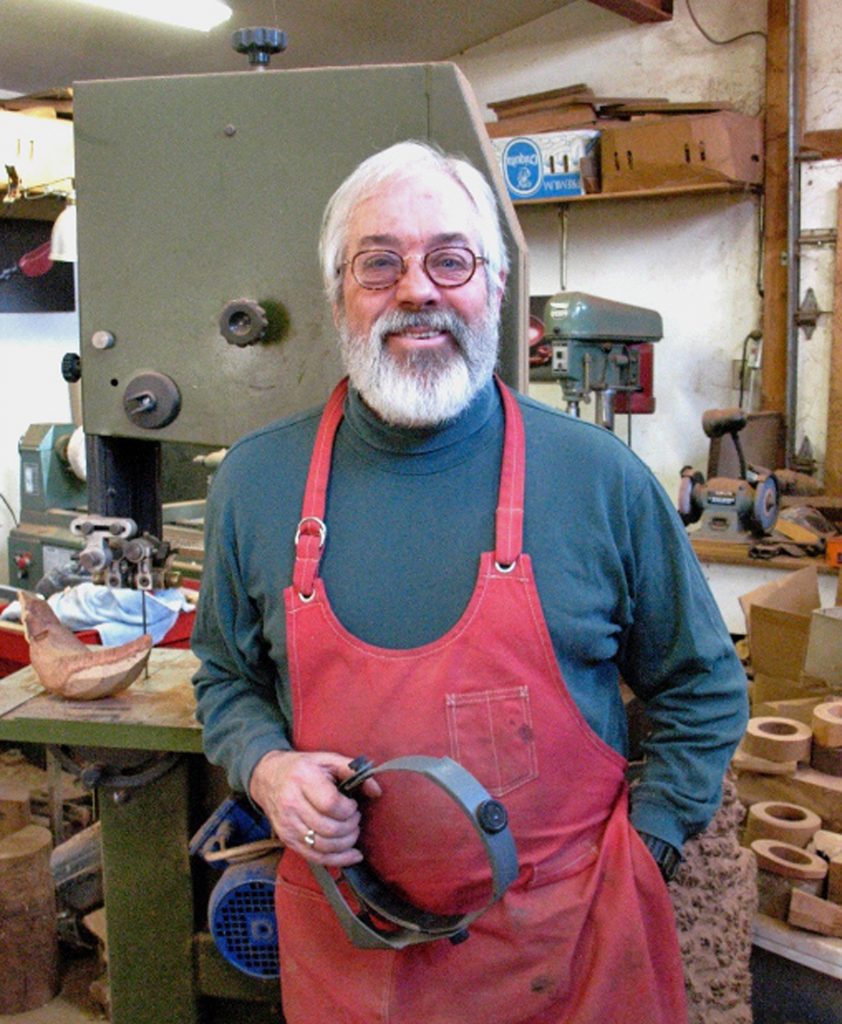
Contact details:
Norm Sartorius
www.normsartorius.com
Deborah Blakeley, Melbourne, Australia
Interview by Deborah Blakeley, June 2019
Think a colleague or friend could benefit from this interview?
Knowledge is one of the biggest assets in any business. So why not forward this on to your friends and colleagues so they too can start taking advantage of the insightful information the artist has given?
Other artists you may be interested in:


